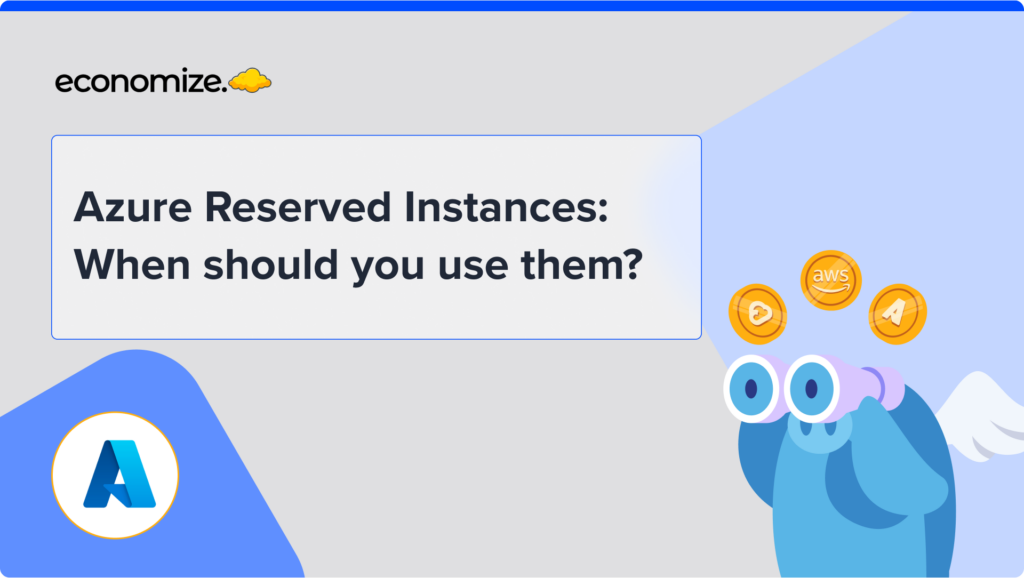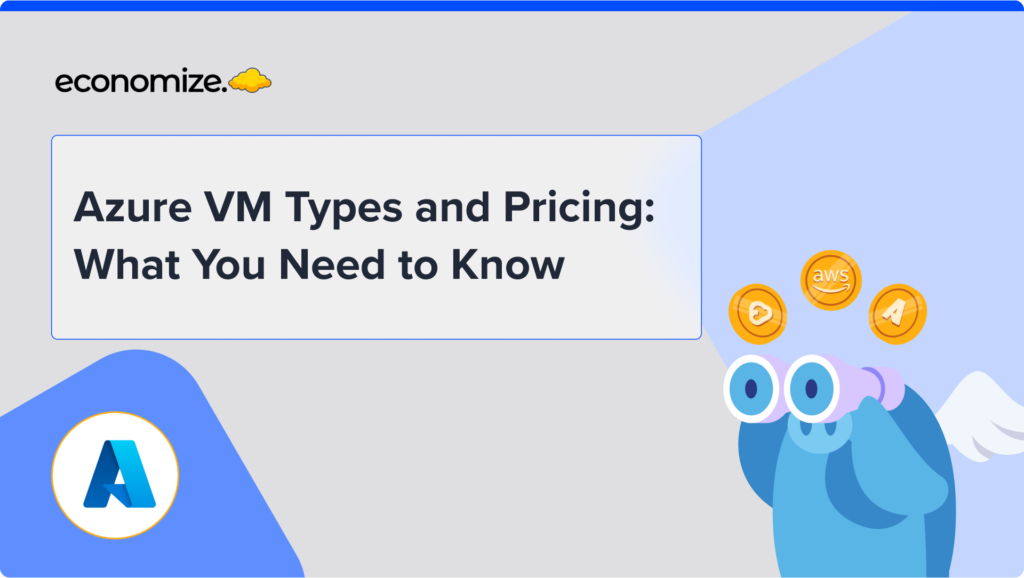Cloud computing has revolutionized the way organizations manage their IT infrastructure, offering scalability, flexibility, and cost-efficiency.
However, to make informed decisions about migrating to the cloud, businesses need to understand the Total Cost of Ownership (TCO). Cloud TCO goes beyond the initial visible costs and takes into account various factors that contribute to the overall expenses.
In this article, we will explore what Cloud TCO is, how to calculate it, compare TCO between major cloud providers (AWS, GCP, and Azure), analyze benefits over on-premise TCO, look at strategies to lower cloud TCO and address common FAQs.
What is Cloud TCO?
Total Cost of Ownership (TCO) is a financial estimation that helps organizations assess the complete cost of adopting and operating cloud-based services compared to traditional on-premises solutions. It includes direct costs, such as subscription fees, as well as indirect costs like maintenance, support, and operational expenses.
How do I Calculate Cloud TCO?
Calculating the Total Cost of Ownership (TCO) for cloud services involves a comprehensive analysis of various cost factors, including both visible and hidden expenses.
Here’s a step-by-step guide to help you calculate Cloud TCO:
Cost Factors to Consider
- Infrastructure Costs: Compare the hardware and networking expenses for your on-premise solution with the subscription fees for cloud services.
- Operating Costs: Evaluate ongoing expenses associated with maintaining your on-premise infrastructure, such as electricity, cooling, and personnel costs. Compare these with the operational fees charged by cloud service providers.
- Software Licensing: Analyze the difference in software licensing costs between on-premise solutions and cloud-based subscription models.
- Scalability and Flexibility: Consider how scaling resources in the cloud can impact costs compared to the fixed capacity of on-premise solutions.
- Downtime and Business Impact: Assess the potential financial impact of downtime for both on-premise and cloud solutions.
- Data Transfer and Egress Costs: Take into account the data transfer costs between cloud regions and any egress charges.
- Training and Support: Include expenses related to employee training and ongoing support for managing the cloud infrastructure.
- Security and Compliance: Factor in additional costs for ensuring security and compliance requirements in the cloud.
Hidden Costs
- Data Storage Costs: Sometimes, cloud providers charge for storing large amounts of data, and these costs might not be apparent initially.
- Data Retrieval Fees: Retrieving data from certain cloud storage services can incur additional charges.
- Network Traffic Costs: Interacting with cloud services, especially across different regions, can result in network traffic costs.
- Vendor Lock-In: Consider the potential cost implications of switching cloud providers in the future.
Direct Costs
- Subscription Fees: The base cost of cloud services, which is typically a monthly or hourly fee based on usage.
- Compute Instances: Charges for virtual machine instances based on their size, configuration, and usage.
- Storage: Costs for storing data in the cloud, which may vary based on the storage type and volume.
- Networking: Charges related to data transfer within the cloud environment and to and from the internet.
- Backup and Disaster Recovery: Costs associated with backup storage and disaster recovery solutions.
AWS, GCP, and Azure Cloud TCO

Amazon Web Services (AWS): AWS offers a TCO calculator that allows you to estimate the cost savings of moving to the cloud compared to on-premise solutions. The calculator considers factors like hardware, software, IT labor, and other relevant costs. You can access the AWS TCO Calculator here.
Google Cloud Platform (GCP): GCP provides a TCO calculator that enables businesses to compare the costs of on-premise infrastructure with the cloud. The calculator considers various cost factors, including hardware, networking, and energy consumption. You can access the GCP TCO Calculator here.
Microsoft Azure: Azure’s TCO calculator allows organizations to estimate the cost of migrating to the cloud, factoring in aspects like virtual machines, storage, CDN usage, and data transfer. It also compares the TCO of Azure with on-premise solutions. You can access the Azure TCO Calculator here.
Each cloud provider has its own pricing structure. The following table provides a comparison of the pricing elements for AWS, GCP, and Azure:
| Cost Element | AWS | GCP | Azure |
|---|---|---|---|
| Compute | On-demand | Preemptible | Spot |
| Storage | S3 | Cloud Storage | Blob Storage |
| Networking | Elastic Load Balancing | Cloud Load Balancing | Load Balancing |
| Database | RDS | Cloud SQL | SQL Database |
| Application | Elastic Beanstalk | App Engine | App Service |
| Migration | Migration Hub | Cloud Migrate | Server Migration Service |
| Support | Business Support | Standard Support | Basic Support |
Benefits Analysis of On-Premise TCO to Cloud TCO
Migrating from traditional on-premise infrastructure to the cloud offers numerous benefits beyond cost savings. While calculating the Total Cost of Ownership (TCO) is essential for understanding the financial implications, it is equally important to consider the broader advantages of moving to the cloud. Let’s explore the benefits of transitioning from On-Premise TCO to Cloud TCO:
Cost Savings and Flexibility
- Pay-as-You-Go Model: Cloud services follow a pay-as-you-go pricing model, allowing businesses to pay only for the resources they use. This eliminates the need to invest in expensive upfront hardware and software.
- Economies of Scale: Cloud providers can achieve economies of scale, offering their services to numerous customers. This allows them to reduce costs and pass on the savings to their users.
- Scalability: Cloud services provide the flexibility to scale resources up or down based on demand. Businesses can easily adjust their infrastructure to handle varying workloads, optimizing costs as required.
Enhanced Performance and Reliability
- Global Reach: Cloud providers have data centers located worldwide, allowing businesses to deploy their applications closer to end-users for lower latency and better performance.
- High Availability: Cloud services typically offer robust redundancy and failover mechanisms, ensuring high availability and minimal downtime.
Advanced Security and Compliance
- Security Expertise: Cloud providers invest heavily in cybersecurity, employing teams of security experts and implementing advanced security measures.
- Compliance Support: Leading cloud platforms often comply with industry standards and certifications, helping businesses meet regulatory requirements.
Agility and Innovation
- Faster Deployment: Cloud services enable rapid deployment of applications and services, reducing time-to-market for new products and features.
- Innovative Services: Cloud providers offer a wide array of managed services, such as AI, machine learning, and big data analytics, allowing businesses to leverage advanced technologies without significant upfront investments.
Reduced IT Management Burden
- Automatic Updates and Patches: Cloud providers handle software updates and security patches, freeing IT teams from routine maintenance tasks.
- Focus on Core Business: By offloading infrastructure management to the cloud, IT teams can concentrate on strategic initiatives and core business activities.
Disaster Recovery and Business Continuity
- Built-in Redundancy: Cloud providers often replicate data across multiple data centers, offering built-in disaster recovery capabilities.
- Data Backups: Automated backup and recovery services are readily available, ensuring data resilience in case of failures.
Green Initiatives
- Energy Efficiency: Cloud data centers are designed for energy efficiency, with advanced cooling and power management techniques, contributing to environmental sustainability.
Global Collaboration and Accessibility
- Anywhere Access: Cloud services enable users to access data and applications from anywhere with an internet connection, promoting remote work and collaboration.
- Global Teams: Cloud-based collaboration tools facilitate seamless communication and teamwork among geographically dispersed teams.
How to reduce Cloud TCO?
As businesses increasingly adopt cloud services, optimizing the Total Cost of Ownership (TCO) becomes a crucial aspect of effective cloud management. Lowering cloud TCO involves maximizing cost-efficiency while still meeting performance and business requirements. Here are some best practices to help you reduce your cloud TCO:
Monitor Resource Usage
- Utilize monitoring and analytics tools to gain insights into resource consumption patterns.
- Identify underutilized resources and consider rightsizing or terminating them.
- Implement auto-scaling to dynamically adjust resources based on actual demand.
Choose the Right Pricing Model
- Select appropriate pricing models, such as On-Demand, Reserved Instances, or Spot Instances.
- Leverage Reserved Instances for steady-state workloads with long-term commitments to get significant discounts.
Optimize Storage Costs
- Use data lifecycle policies to automatically migrate infrequently accessed data to lower-cost storage tiers.
- Deduplicate and compress data to reduce storage requirements.
Leverage Serverless Architectures
- Embrace serverless computing for event-driven workloads to eliminate the need for provisioning and managing servers.
- Serverless services often offer cost advantages for sporadic or low-traffic applications.
Optimize Data Transfer Costs
- Minimize data transfer between different regions or availability zones within the same cloud provider.
- Use content delivery networks (CDNs) to cache and serve frequently accessed content closer to users.
Use Spot Instances Wisely
- Spot Instances are cost-effective but can be interrupted with little notice. Use them for fault-tolerant, non-critical workloads.
- Utilize Spot Instances in conjunction with On-Demand or Reserved Instances for hybrid cost management.
Embrace Multi-Cloud Strategies
- Adopt a multi-cloud approach to avoid vendor lock-in and take advantage of competitive pricing.
- Use cloud management tools to streamline operations across multiple cloud providers.
Implement Tagging and Governance
- Enforce tagging policies to attribute costs to specific projects or departments, enabling better cost allocation.
- Establish governance and cost control mechanisms to manage cloud usage effectively.
Review and Optimize Architecture
- Regularly assess your application architecture and consider cloud-native services that can replace self-managed solutions.
- Leverage managed services for databases, containers, and other components to reduce administrative overhead.
Conduct Regular Cost Audits
- Perform periodic cost audits to identify trends and opportunities for further optimization.
- Engage finance and IT teams in regular cost review meetings.
FAQs (Frequently Asked Questions)
1. What is Cloud Total Cost of Ownership (TCO)?
Cloud TCO is the total calculation of all costs involved in adopting and running cloud services, including both direct and indirect expenses.
2. How do I calculate Cloud TCO?
Calculate Cloud TCO by considering infrastructure, data transfer, database, backup, management, training costs, and hidden expenses.
3. What are some hidden costs of the cloud?
Hidden costs include data egress fees, compliance expenses, premium support fees, and unexpected charges.
4. How does Cloud TCO compare across AWS, GCP, and Azure?
Cloud TCO varies based on workload, region, and pricing models. Use AWS, GCP, and Azure TCO calculators for estimates.
5. What are the benefits of migrating to the cloud in terms of TCO?
Benefits include cost savings, scalability, flexibility, managed services, and global reach.
6. How can I lower my cloud TCO?
Lower TCO through resource optimization, cost-effective pricing models, serverless architectures, and multi-cloud adoption.
7. Can I negotiate pricing with cloud providers?
Yes, larger enterprises can negotiate custom pricing and discounts with cloud providers.
8. How frequently should I assess my cloud costs?
Regularly assess costs, preferably monthly or quarterly, to identify trends and optimization opportunities.
9. Can I use multiple cloud providers simultaneously?
Yes, adopting a multi-cloud strategy involves using services from multiple cloud providers.
10. What role does cloud cost awareness play in optimizing TCO?
Cloud cost awareness educates teams about the financial impact of cloud resource usage, leading to cost-conscious decisions and savings.
Conclusion
Cloud TCO is an important consideration for organizations that are considering moving to the cloud. By understanding the different factors that can affect cloud TCO, organizations can make informed decisions about whether or not cloud computing is the right choice for their needs.
If you’re keen on learning more about Cloud cost management, we invite you to explore these articles:
- Top 17+ Cloud Cost Management & FinOps Tools
- Best Practices for Cloud Cost Optimization
- How to set FinOps KPIs
- Leading FinOps Strategies For Optimizing Cloud Costs
- Free Open-Source Cloud Cost Optimization Tools
Struggling with monthly cloud expenditure?
Consider scheduling a demo with Economize. It’s free, swift, and proven to be effective.
We trust this article has been enlightening in your understanding of Cloud TCO and the various cost factors involved. Should you have further queries, please feel free to share them in the comments section below.








